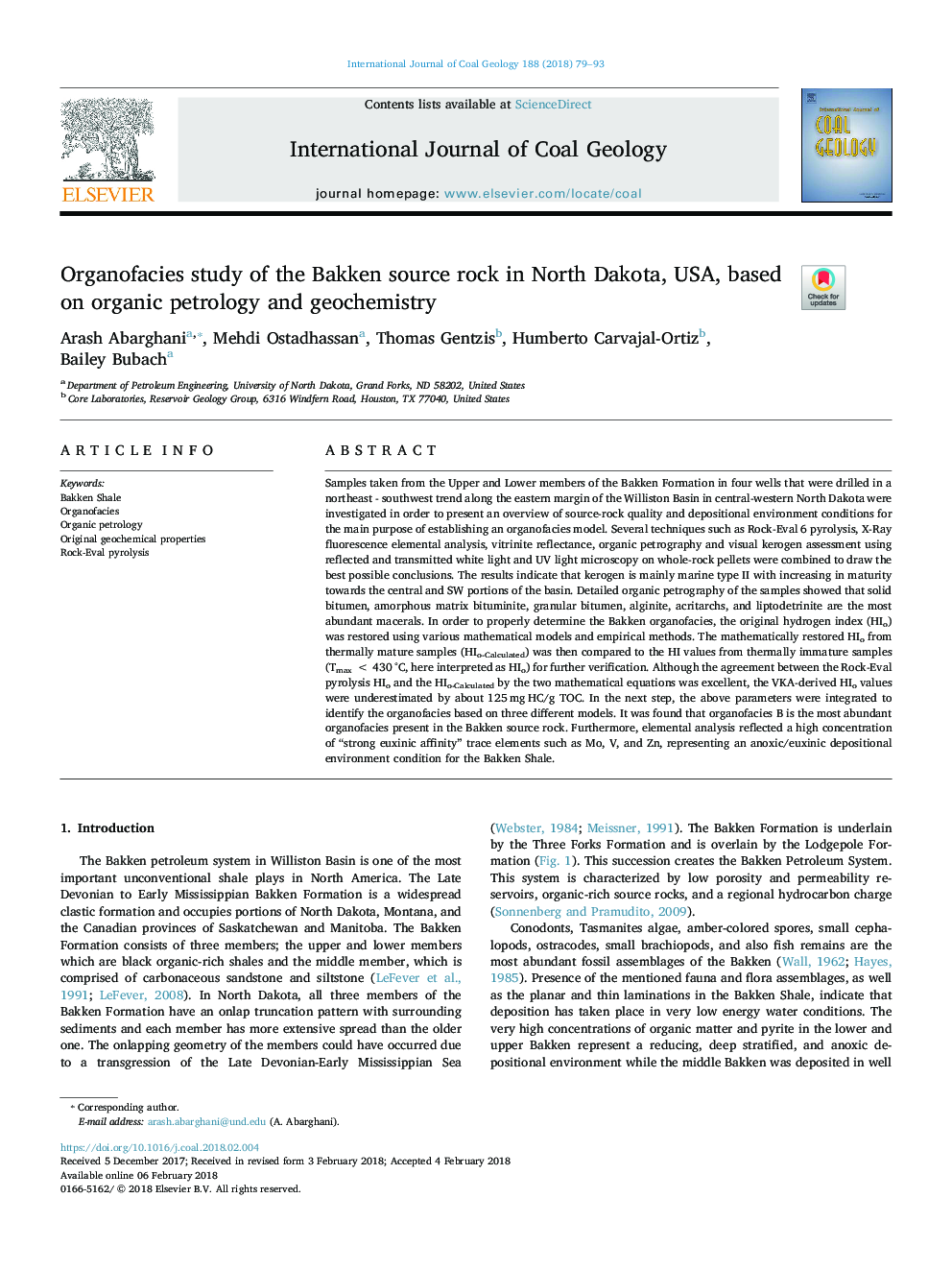| کد مقاله | کد نشریه | سال انتشار | مقاله انگلیسی | نسخه تمام متن |
|---|---|---|---|---|
| 8123520 | 1522515 | 2018 | 15 صفحه PDF | دانلود رایگان |
عنوان انگلیسی مقاله ISI
Organofacies study of the Bakken source rock in North Dakota, USA, based on organic petrology and geochemistry
ترجمه فارسی عنوان
بررسی ساختار سازه های سنگ راکت باکک در داکوتای شمالی، ایالات متحده آمریکا، بر اساس پترولوژی آلی و ژئوشیمی
دانلود مقاله + سفارش ترجمه
دانلود مقاله ISI انگلیسی
رایگان برای ایرانیان
کلمات کلیدی
موضوعات مرتبط
مهندسی و علوم پایه
علوم زمین و سیارات
زمین شناسی اقتصادی
چکیده انگلیسی
Samples taken from the Upper and Lower members of the Bakken Formation in four wells that were drilled in a northeast - southwest trend along the eastern margin of the Williston Basin in central-western North Dakota were investigated in order to present an overview of source-rock quality and depositional environment conditions for the main purpose of establishing an organofacies model. Several techniques such as Rock-Eval 6 pyrolysis, X-Ray fluorescence elemental analysis, vitrinite reflectance, organic petrography and visual kerogen assessment using reflected and transmitted white light and UV light microscopy on whole-rock pellets were combined to draw the best possible conclusions. The results indicate that kerogen is mainly marine type II with increasing in maturity towards the central and SW portions of the basin. Detailed organic petrography of the samples showed that solid bitumen, amorphous matrix bituminite, granular bitumen, alginite, acritarchs, and liptodetrinite are the most abundant macerals. In order to properly determine the Bakken organofacies, the original hydrogen index (HIo) was restored using various mathematical models and empirical methods. The mathematically restored HIo from thermally mature samples (HIo-Calculated) was then compared to the HI values from thermally immature samples (Tmaxâ¯<â¯430â¯Â°C, here interpreted as HIo) for further verification. Although the agreement between the Rock-Eval pyrolysis HIo and the HIo-Calculated by the two mathematical equations was excellent, the VKA-derived HIo values were underestimated by about 125â¯mgâ¯HC/g TOC. In the next step, the above parameters were integrated to identify the organofacies based on three different models. It was found that organofacies B is the most abundant organofacies present in the Bakken source rock. Furthermore, elemental analysis reflected a high concentration of “strong euxinic affinity” trace elements such as Mo, V, and Zn, representing an anoxic/euxinic depositional environment condition for the Bakken Shale.
ناشر
Database: Elsevier - ScienceDirect (ساینس دایرکت)
Journal: International Journal of Coal Geology - Volume 188, 1 March 2018, Pages 79-93
Journal: International Journal of Coal Geology - Volume 188, 1 March 2018, Pages 79-93
نویسندگان
Arash Abarghani, Mehdi Ostadhassan, Thomas Gentzis, Humberto Carvajal-Ortiz, Bailey Bubach,
